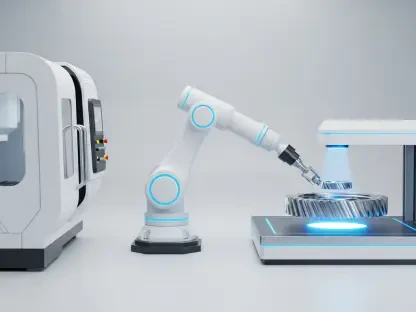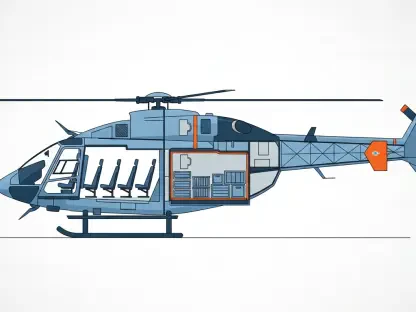In the tumultuous realm of electric vehicles, Tesla, Inc. has consistently illustrated a knack for groundbreaking innovation, particularly in the automotive manufacturing process. But today, whispers within the industry paint a picture of a company at an apparent crossroads. Tesla’s visionary ethos, often associated with its sleek all-electric cars and the maverick spirit of CEO Elon Musk, seems to be veering towards a new horizon—one predominated by artificial intelligence (AI) and robotics. With Tesla experiencing an uncharacteristic slump in sales during the first quarter, the question emerges: Is Tesla shifting gears from revolutionizing car manufacturing to pioneering advancements in AI and robotics? This shift away from its former production-centric focus could mark a strategic transformation, redefining Tesla’s core identity and possibly reshaping the future landscape of technology-driven industries.
The Redefinition of Tesla’s Manufacturing Approach
Once seen as the paragon of manufacturing innovation, Tesla’s approach to building cars was deeply rooted in efficiency. By implementing the use of large “gigacastings” for components like the Model Y’s chassis and championing a “structural” battery pack that doubles as the vehicle’s floor, Tesla had upended traditional automotive production models. These bold moves were part of Musk’s allegiance to first principles thinking, shaking the established foundations of car manufacturing. Yet, despite Tesla’s past penchant for innovation in this area, there appears to be a palpable shift in the wind. Plans for the so-called unboxed assembly process, touted to revolutionize efficiency by more than 50%, have reportedly been shelved. The anticipated affordable models that were to benefit from this cutting-edge production have been redirected to be built on modified versions of existing platforms at Tesla’s Texas Gigafactory. These changes signal a strategic pivot, suggesting a potential new focus that could re-orient the company’s trajectory for the coming years.In light of these developments, Tesla’s manufacturing paradigm, known for its novelty, now confronts a future where its traditional methods may no longer be at the forefront. The decision to suspend novel manufacturing initiatives and revert to modified existing methodologies points to a significant realignment of the company’s priorities. While the commitment to innovation remains, it may now be channeled into different streams—namely AI and robotics.
Musk’s Vision: AI and Robotics as the Future
Elon Musk’s fascination with AI and robotics is no secret, and recent utterances from the tech maverick hint at a profound shift in focus for Tesla. On an earnings call, Musk’s comments about the “Optimus” humanoid robot captured considerable attention. He claimed that the potential economic impact of such robotics could surpass all of Tesla’s existing product lines combined, should the machine reach a level of practical sentience—a stark pronouncement for a company synonymous with electric vehicles. This notion doesn’t merely signal an additional business interest but indicates a pivotal reimagining of Tesla’s future value proposition.Envisioning Tesla as an AI and robotics powerhouse could be a transformative step not just for the company but for the sector at large. This strategic redirection prioritizes autonomous technologies, suggesting that Tesla is positioning itself at the vanguard of another nascent industry. Musk’s bet on AI ushers in expectations of new innovations and underscores his ambition to drive the technological dialogue beyond the automotive sphere.
The Implications of a Strategic Pivot on Production
As Tesla shifts its gaze towards AI, changes on the production front are already becoming evident. The adaptation of manufacturing strategies to support the integration of advanced AI components and robotics denotes a recalibrated focus. The once-celebrated expansion of gigacasting for the complete vehicle underbody has been put on the back burner, and the significant advancements in 4680 battery cell technology, previously hailed as a potential game-changer for reducing battery costs by half, have taken a back seat.The operational decisions made by Tesla as of late have been telling. There is a drifting importance placed on mass-market automotive production in favor of a deep dive into the realms of AI and autonomy. This balance between upkeeping traditional car manufacturing excellence and exploring the fertile ground of emergent technologies is a tightrope that Tesla is attempting to walk, perhaps in pursuit of new avenues that promise even greater rewards.
Financial Performance and Strategic Responses
Financial performances often dictate the movements of a corporation, and Tesla is no exception. The pivot towards AI and robotics could be interpreted as a response to the company’s recent sales anomalies. The stakeholder pressures that come with fluctuating financials might have nurtured the seed of redirection, encouraging Tesla to realign its vision towards more profitable and revolutionary market sectors such as AI.The keen focus on robotics and AI suggests that Tesla, guided by Musk’s foresight, is not content with being a mere player in the automotive industry. Instead, it’s possible that the company is reinventing itself, envisioning a role at the very forefront of AI evolution—perhaps moving towards a tech-centric future that could outpace the growth and profitability of traditional car production.
Industry Impact and Competitive Innovations
Change within Tesla invariably ripples across the entire industry. As Tesla pioneered manufacturing methodologies like gigacasting and structural battery packs, others followed suit. Today, as Tesla’s operational shifts become apparent, industry giants such as Toyota and Volvo are developing their gigacasting capabilities, and wider parts consolidation has become an increasingly common practice among EV manufacturers vying for an edge. The prospect of an affordable $25,000 electric vehicle, spurred by Tesla’s innovative assembly process, has sparked discussions industry-wide, indicating that Tesla’s influence persists despite new strategic leanings.Tesla has undeniably sown seeds of change in the automotive landscape, and its switch to AI and robotics could potentially have an equally significant impact. While the electric car continues to transform personal transportation, Tesla’s directional shift may catalyze a new kind of revolution—one where the intersection of innovative manufacturing, AI, and robotics define the next phase of competitiveness in the industry.
Tesla’s Identity and Broader Impact on Tech Business Models
Amidst Tesla’s evolution, the departure of key executives and targeted employee layoffs have hinted at a more profound shift well underway. The company is increasingly being perceived not just as an automaker but as a technology-centric powerhouse, looking to redefine the very essence of mobility and production through AI and robotics. This pivot could not only alter Tesla’s own narrative but could also influence the way technology and business models are perceived within the auto industry and beyond.The sense of reinvention is tangible within Tesla’s overarching strategy, pointing to an expansive vision where software, AI, and robotics will likely become central pillars in its ecosystem. As Tesla veers into this new technological domain, the company embodies the adaptability and innovation that often distinguishes leaders from followers in the high-tech economy. This transition, from a focus on vehicles to pioneering AI, stands as a testament to Tesla’s relentless drive for innovation, and it may just set the tone for the next chapter in the industry’s evolution.









